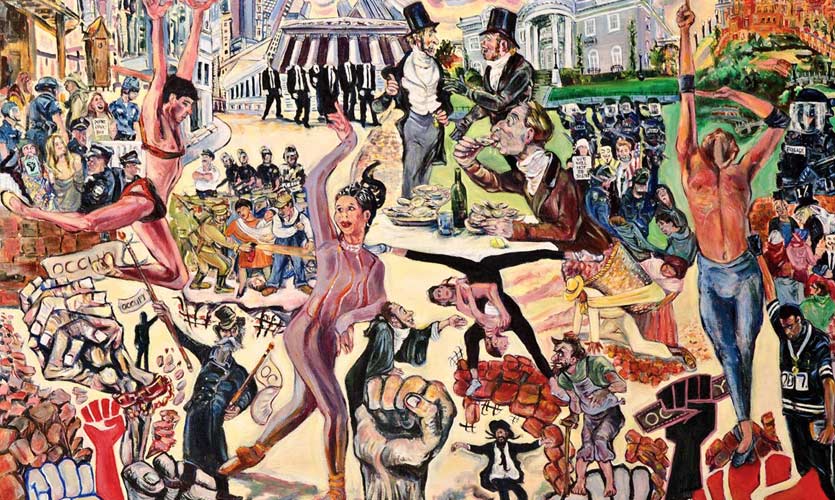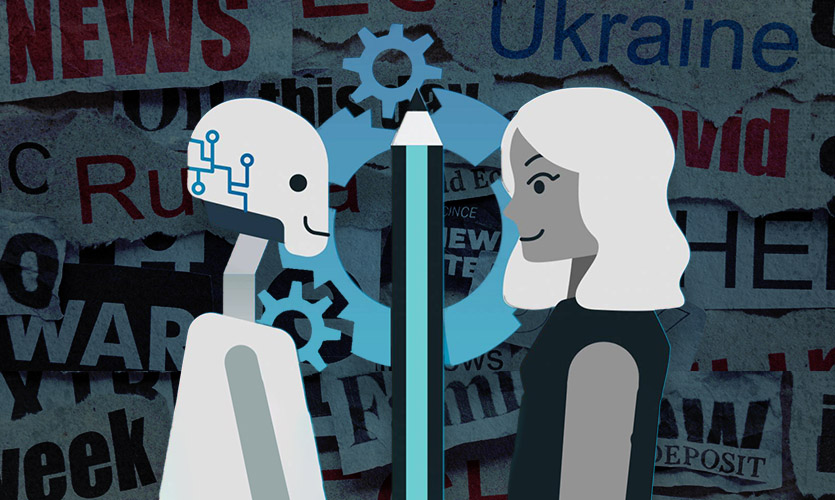In 2018, Indian political journalist Rasheed Kidwai released his book, “Neta Abhineta: Bollywood Star Power in Indian Politics”once again sparking the age-old debate of art and politics going hand-in-hand. Kidwai provides his readers with historical accounts, anecdotes, and stories of prominent figures like Dilip Kumar, Nargis, Amitabh Bachchan, and Rajesh Khanna fulfilling their political ambitions.
The idea of political engagements is not confined to Bollywood megastars. It is far more extensive and is becoming increasingly ubiquitous. Art, in general, has the power to move nations and influence political events.“All art has politics in it, whether it is acknowledged or not,” says a Mumbai-based artist.
Anju Dodiya, renowned for her ‘sensitive fictional self-portraits’ portrays a figure eating books, subtly pointing towards the idea of censorship in one of her works. Subjects like clashes of civilizations and religious fundamentalism are being explored through the production of some bold artwork in India.
During the Anti-CAA protests across India, art was used as a weapon to for protestors. Creative posters, poetry, and graffiti were used to express dissent. There are conflicting opinions about whether politically motivated art is healthy for democracy or not. Most argue that it’s a subset of freedom of expression, while others believe that it’s detrimental to the democratic framework of the country.
The Politics of Indian Cinema
In mainstream cinema, addressing the elephant in the room is risky. For instance, after the release of Article 15, the Brahmin community accused the filmmaker, Anubhav Sinha for distorting the story and projecting the community in a bad light. Some had problems with the Brahmin hero standing for the rights of Dalits. The idea was compared to the white savior syndrome which is prevalent in Hollywood.
A majority of Indian filmmakers believe that it’s become increasingly difficult for them to make films revolving around ‘tough and sensitive subjects.’ Although Sinha wanted the audience to approach the movie without any preconceived notions, it received major backlash before its release. The movie was also banned in some Indian states.
Some filmmakers are certain that stories are universal and have the ability to create paradigm shifts. Indian cinema must capitalise on this. Interestingly, Hollywood filmmakers have never shied away from making political biopics or from addressing sensitive political subjects. Does that mean that western audiences are more tolerant towards sensitive subjects? Perhaps.
For instance actor Sean Penn, who is currently working on a documentary on the Russo-Ukrainian Conflict, won the Oscar for Best Actor for his performance in Milk (2008). In the movie, he played an American activist fighting for gay rights and eventually gets elected as the first gay official in the US administration.
Producing something similar to this in India is strenuous. From censorship regulations to political agitation to cultural backlash, filmmakers, time and again, are forced to think of every possible scenario before touching a ‘sensitive’ subject.
Today, OTT platforms are a breath of fresh air. At least there’s space out there for filmmakers to exercise creative liberty. But with regards to mainstream cinema, the film fraternity believes we still have a long way to go.“Cinema is a capital-intensive art. It doesn’t care about caste, class, or political ideologies. It only understands two classes: success and failure,” said Anubhav Sinha
Films can reflect the world we live in, at the same time, they can be aspirational. They reflect our fantasies and concerns. Harshly criticising movies and filmmakers on political and cultural grounds will leave no room for dialogue, creativity, and most importantly, progress.
Read more: Art Is Driven To The Margins Of The Indian Education System










